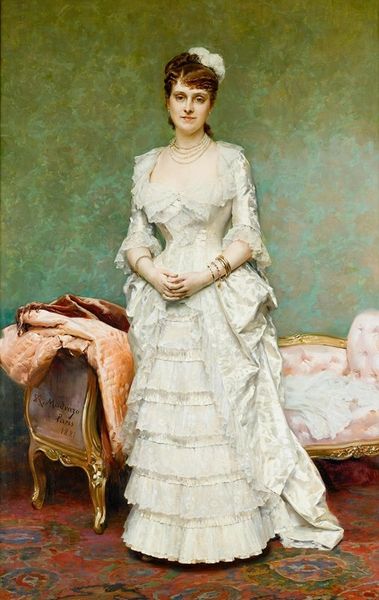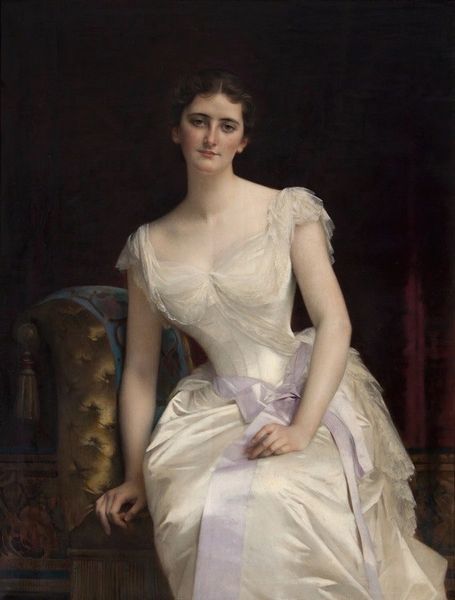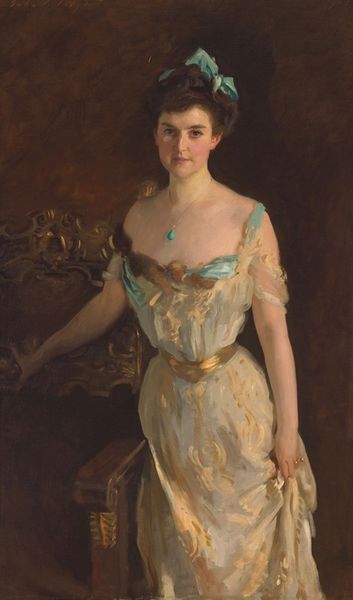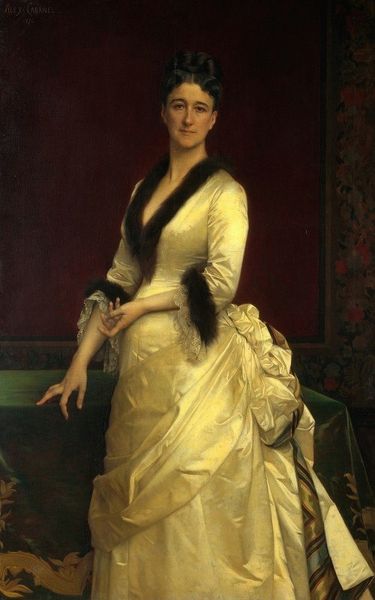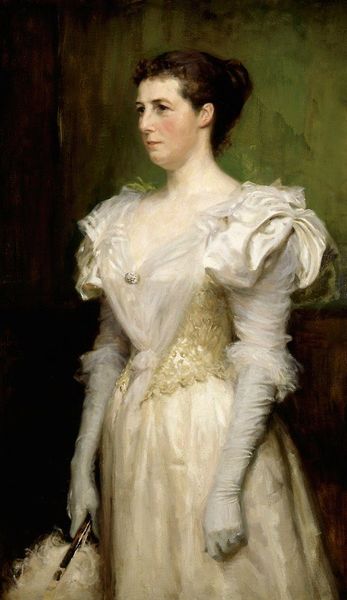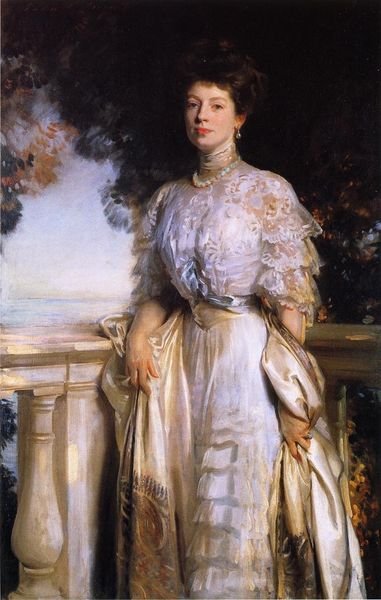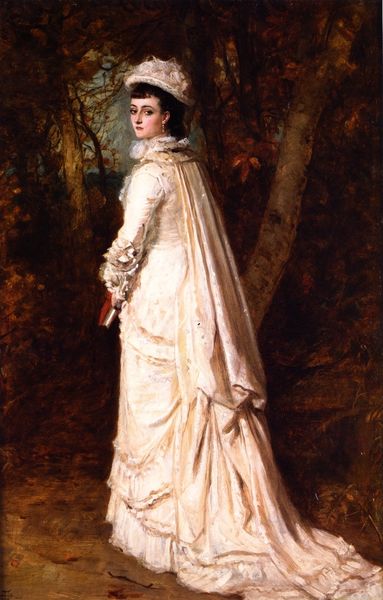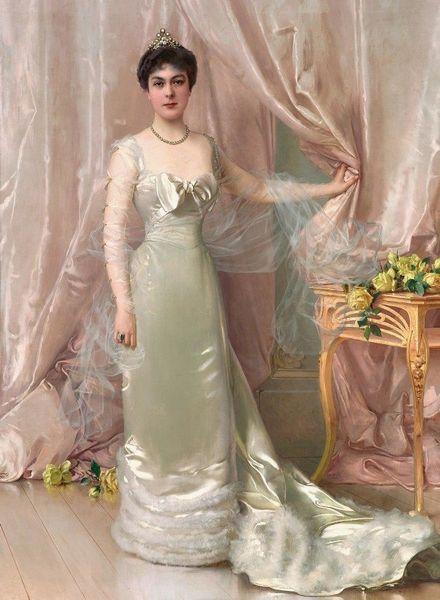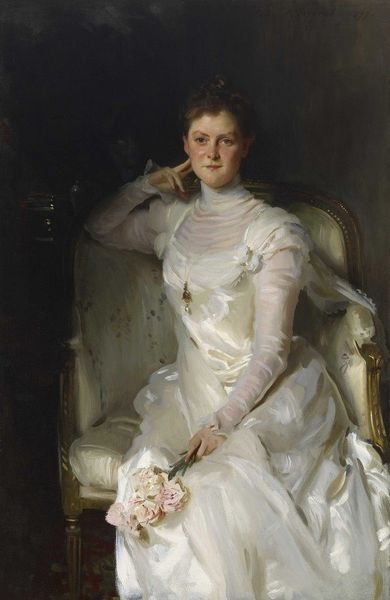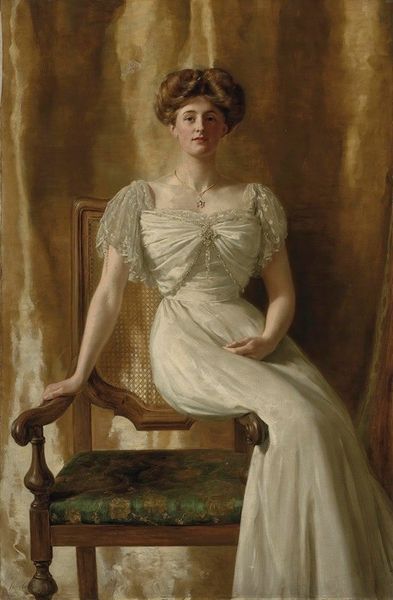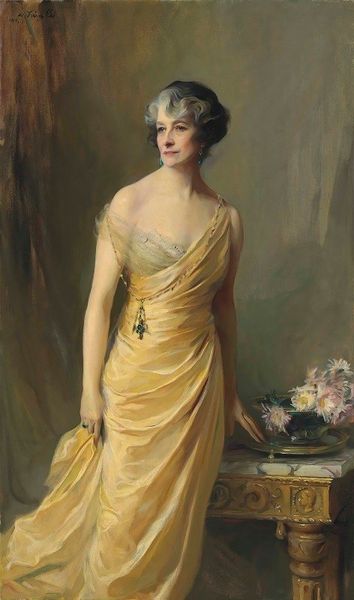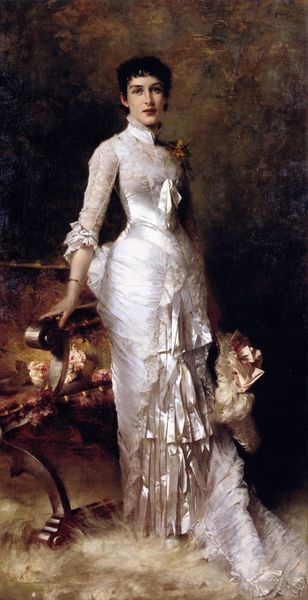
Copyright: Public Domain: Artvee
Curator: We are standing before John Singer Sargent’s oil painting "Margaret Stuyvesant Rutherfurd White," completed in 1883. It’s a striking full-length portrait. Editor: Immediately, I notice the cool detachment—the almost steely composure of the subject, which contrasts sharply with the frothy, ornate quality of her dress. She seems both present and utterly unreachable. Curator: Absolutely. White's posture and the overall composition reflect the established conventions of academic portraiture, designed to project status and elegance. Yet, Sargent’s brushwork gives the portrait a remarkably modern, almost unfinished, quality. Editor: The dress… it feels almost like armor, a beautiful cage. Do you see how the layers of fabric mimic the social expectations she might have carried? Layers of privilege, yes, but also restriction. I wonder, what's concealed beneath all of this refinement? Curator: A perceptive question! Fashion of the period dictated strict codes, reinforcing social hierarchy. Notice how Sargent uses the whiteness of the gown, which signifies purity and innocence, a highly valued trait for women of her station, but there's a stark almost ethereal sense in that pallor. Editor: And that little fan! Such a polite weapon, barely concealing something unsaid. Perhaps her reserved expression isn't just about societal expectations, but personal ones, internal conflicts. What story is hiding in plain sight? It’s so fascinating to witness how clothing becomes a form of social signaling and even a shield against unwanted gazes. Curator: Yes, and look at the positioning. She's framed by these draped textiles and gilded furniture which speaks volumes about her place within a very specific world—a world both lavish and incredibly controlled. But I'd also consider Sargent’s role. Was he complicit in perpetuating the rigid portrayal of women of that era, or was he subtly challenging it? Editor: Good point. Sargent was such a canny observer, walking the tightrope between flattery and honesty. This work is more than just capturing a likeness; it seems to offer glimpses into her interior world that may very well surprise her wealthy social circles. He makes one wonder about her, not about her social standing but rather about the life and dreams and regrets she carries inside of her. I think in this respect he challenges the constraints placed upon not only her existence, but rather all people’s existence during this time, regardless of wealth. Curator: It is a masterclass in suggestion. A dialogue about visibility and interiority—who we are, who we are expected to be, and how those facets sometimes do not overlap at all. Editor: Well said. It truly reminds us to look deeper and try to imagine beyond the surface. A painting like this offers infinite rooms within itself.
Comments
No comments
Be the first to comment and join the conversation on the ultimate creative platform.
